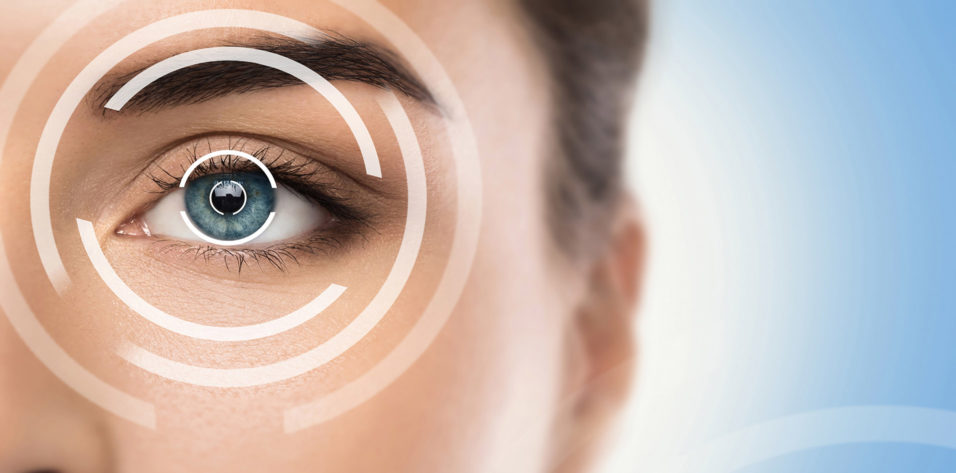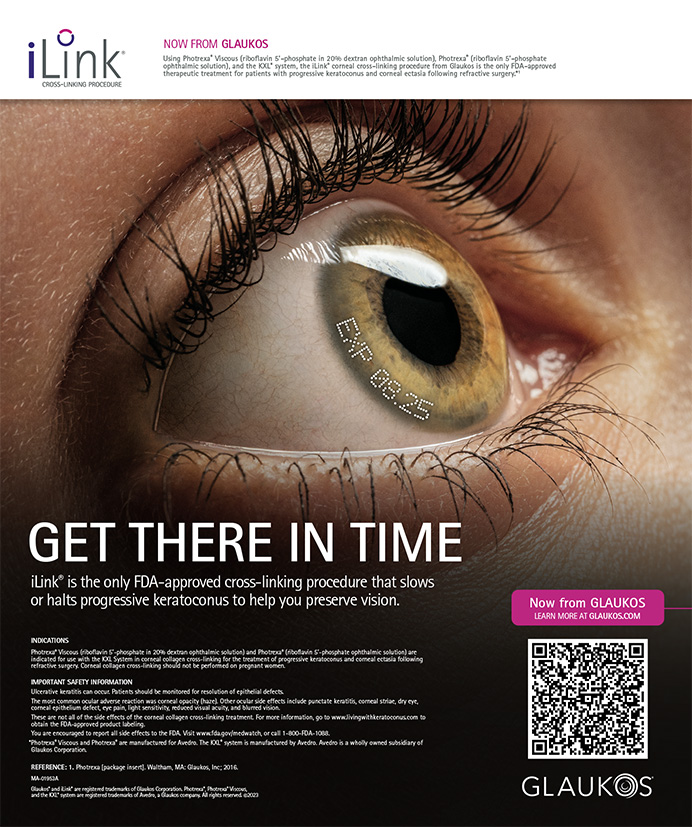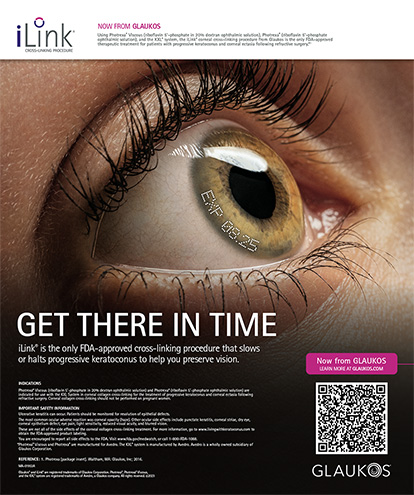
Topography-Guided Versus Wavefront-Optimized Laser in Situ Keratomileusis for Myopia: Surgical Outcomes
Kim J, Choi SH, Lim DH, et al1
Industry support: No
ABSTRACT SUMMARY
For this prospective study, 43 patients underwent topography-guided LASIK in one eye and wavefront-guided LASIK in the contralateral eye. The treatment for each eye was chosen in a randomized fashion from a computer-generated list. Procedures were performed by one of two surgeons. All flaps (9 mm) were created with the WaveLight FS200 femtosecond laser (Alcon). The Contoura Vision software and WaveLight EX500 excimer laser (both products from Alcon) were used for all ablations. The bilateral surgeries were performed on the same day.
STUDY IN BRIEF
A prospective randomized study compared results with simultaneous topography- and wavefront-guided LASIK for the treatment of myopia. Although both techniques safely and effectively achieved the predicted refractive and visual outcomes, topography-guided LASIK induced a lower amount of higher-order aberrations, and the procedure significantly decreased ocular trefoil, corneal total higher-order aberrations, and coma.
WHY IT MATTERS
This study supports the safety and efficacy of two customized approaches to laser vision correction, and it provides guidance on choosing between current technologies.
Patients (age, 18–45 years) had stable refractive errors of -0.50 to -7.50 D of spherical myopia, between 0.00 and 3.00 D of astigmatism, and a maximum manifest spherical equivalent of -9.00 D. Corrected distance visual acuity of 0.1 logMAR or better was required for enrollment. Investigators analyzed refractive and visual outcomes 3 months after surgery. Both procedures safely and effectively achieved the predicted refractive and visual outcomes. In both groups, UCVA was 0.0 logMAR or better in 90.7% of eyes, and the residual spherical equivalent refractive error was ±0.75 D in 81.4% of eyes. UCVA, residual spherical equivalent refractive error, and astigmatism did not differ significantly between the two groups. Topography-guided LASIK induced a lower amount of higher-order aberrations. That technique also significantly decreased ocular trefoil, corneal total higher-order aberrations, and coma. In the wavefront-guided group, corneal coma and trefoil increased significantly, but ocular trefoil did not.
DISCUSSION
This study compared two current forms of LASIK for the correction of myopia. Wavefront-guided LASIK has been widely performed for several years, whereas topography-guided LASIK is a newer option. Surgeons want to know if one of these techniques provides superior clinical outcomes.
A majority of laser vision correction patients are within the dioptric and age ranges represented in this study, so the results of this research have wide applicability. Earlier comparative studies were limited by the use of a manual microkeratome to create flaps, older iterations of the excimer laser to perform the ablations, and small cohorts.
In this study, clinical results with both techniques were excellent. There may be instances when wavefront-guided LASIK is the more appropriate option for a given patient, but that remains to be validated in a future study. For the average myopic patient, topography-guided LASIK appears to provide superior results.
Pain Management After Photorefractive Keratectomy
Shetty R, Dala R, Nair AP, Khamar P, D’Souza S, Vaishnav R2
Industry support: No
ABSTRACT SUMMARY
Investigators evaluated the effect of a bandage contact lens (BCL) soaked in ketorolac tromethamine ophthalmic solution 0.45% (Acuvail, Allergan) on pain modulation in patients undergoing transepithelial PRK. First, the researchers checked the safety of using ketorolac-soaked BCLs by taking cultures and using ultrahigh-performance liquid chromatography to measure the quantity of the drug adsorbed and the elution profile over time. Then, for this prospective case series, researchers divided patients into two groups, each comprising 35 eyes of 35 patients. Group 1 received a regular BCL, and group 2 received a ketorolac-soaked BCL.
STUDY IN BRIEF
In a prospective case series, a bandage contact lens soaked in ketorolac tromethamine ophthalmic solution 0.45% provided statistically significantly greater pain relief immediately after transepithelial PRK than did a regular bandage contact lens. Neither group of patients experienced adverse events, and epithelial healing rates were the same in both groups.
WHY IT MATTERS
PRK is associated with significant postoperative pain, which is why many refractive surgeons do not perform the procedure. This study describes a new approach to enhancing patients’ comfort immediately after PRK.
Investigators compared postoperative pain levels using the validated Wong-Baker pain scale, which measures pain on a scale of 0 (no pain) to 10 (worst possible pain). The mean pain scores immediately after PRK were 7.95 ±2.12 in group 1 and 2.76 ±0.85 in group 2. There was no statistically significant difference in pain scores 3 days after surgery. The mean time to epithelial healing was statistically the same in both groups: 2.84 ±0.32 days in group 1 and 2.86 ±0.57 days in group 2 (P = .19).
Ultrahigh-performance liquid chromatography showed that the BCL acted as a depot for ketorolac, which was released onto the ocular surface over time, relieving postoperative pain without causing adverse events.
DISCUSSION
PRK is associated with significant postoperative pain. Various methods of pain management have been described, including the use of topical and systemic NSAIDs. Two major potential complications of using topical NSAIDs are a delay in corneal epithelial healing and corneal melting. Several studies have established the overall safety of ketorolac ophthalmic solution.
In this study, patients who received a BCL soaked in ketorolac tromethamine ophthalmic solution 0.45% experienced statistically significantly less pain immediately after transepithelial PRK than patients who received a regular BCL. Importantly, there were no adverse events in either group, and the epithelial healing rate was the same in both groups.
1. Kim J, Choi SH, Lim DH, et al. Topography-guided versus wavefront-optimized laser in situ keratomileusis for myopia: surgical outcomes. J Cataract Refract Surg. 2019;45(7):959-965.
2. Shetty R, Dala R, Nair AP, Khamar P, D’Souza S, Vaishnav R. Pain management after photorefractive keratectomy. J Cataract Refract Surg. 2019;45(7):972-976.




